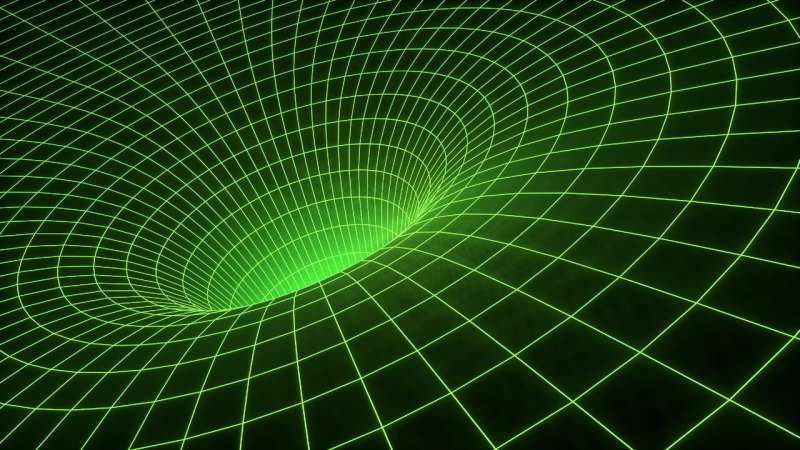This article has been reviewed according to Science X's editorial process and policies. Editors have highlighted the following attributes while ensuring the content's credibility:
fact-checked
peer-reviewed publication
trusted source
proofread
Researcher suggests that gravity can exist without mass, mitigating the need for hypothetical dark matter

Dark matter is a hypothetical form of matter that is implied by gravitational effects that can't be explained by general relativity unless more matter is present in the universe than can be seen. It remains virtually as mysterious as it was nearly a century ago when first suggested by Dutch astronomer Jan Oort in 1932 to explain the so-called "missing mass" necessary for things like galaxies to clump together.
Now Dr. Richard Lieu at The University of Alabama in Huntsville (UAH) has published a paper in the Monthly Notices of the Royal Astronomical Society that shows, for the first time, how gravity can exist without mass, providing an alternative theory that could potentially mitigate the need for dark matter.
"My own inspiration came from my pursuit for another solution to the gravitational field equations of general relativity—the simplified version of which, applicable to the conditions of galaxies and clusters of galaxies, is known as the Poisson equation—which gives a finite gravitation force in the absence of any detectable mass," says Lieu, a distinguished professor of physics and astronomy at UAH, a part of the University of Alabama System.
"This initiative is in turn driven by my frustration with the status quo, namely the notion of dark matter's existence despite the lack of any direct evidence for a whole century."
The researcher contends the "excess" gravity necessary to bind a galaxy or cluster together could be due instead to concentric sets of shell-like topological defects in structures commonly found throughout the cosmos that were most likely created during the early universe when a phase transition occurred. A cosmological phase transition is a physical process where the overall state of matter changes together across the entire universe.
"It is unclear presently what precise form of phase transition in the universe could give rise to topological defects of this sort," Lieu says.
"Topological effects are very compact regions of space with a very high density of matter, usually in the form of linear structures known as cosmic strings, although 2D structures such as spherical shells are also possible.
"The shells in my paper consist of a thin inner layer of positive mass and a thin outer layer of negative mass; the total mass of both layers—which is all one could measure, mass-wise—is exactly zero, but when a star lies on this shell it experiences a large gravitational force pulling it towards the center of the shell."
As gravitational force fundamentally involves the warping of space-time itself, it enables all objects to interact with each other, whether they have mass or not. Massless photons, for example, have been confirmed to experience gravitational effects from astronomical objects.
"Gravitational bending of light by a set of concentric singular shells comprising a galaxy or cluster is due to a ray of light being deflected slightly inwards—that is, towards the center of the large-scale structure, or the set of shells—as it passes through one shell," Lieu notes.
"The sum total effect of passage through many shells is a finite and measurable total deflection which mimics the presence of a large amount of dark matter in much the same way as the velocity of stellar orbits.
"Both the deflection of light and stellar orbital velocities is the only means by which one gauges the strength of the gravitational field in a large-scale structure, be it a galaxy or a cluster of galaxies. The contention of my paper is that at least the shells it posits are massless. There is then no need to perpetuate this seemingly endless search for dark matter."
Questions for future research will likely focus on how a galaxy or cluster is formed by the alignment of these shells, as well as how the evolution of the structures takes place.
"This paper does not attempt to tackle the problem of structure formation. A contentious point is whether the shells were initially planes or even straight strings, but angular momentum winds them up. There is also the question of how to confirm or refute the proposed shells by dedicated observations. Of course, the availability of a second solution, even if it is highly suggestive, is not by itself sufficient to discredit the dark matter hypothesis—it could be an interesting mathematical exercise at best," Lieu concludes.
"But it is the first proof that gravity can exist without mass."
More information: Richard Lieu, The binding of cosmological structures by massless topological defects, Monthly Notices of the Royal Astronomical Society (2024). DOI: 10.1093/mnras/stae1258
Journal information: Monthly Notices of the Royal Astronomical Society
Provided by University of Alabama in Huntsville




















